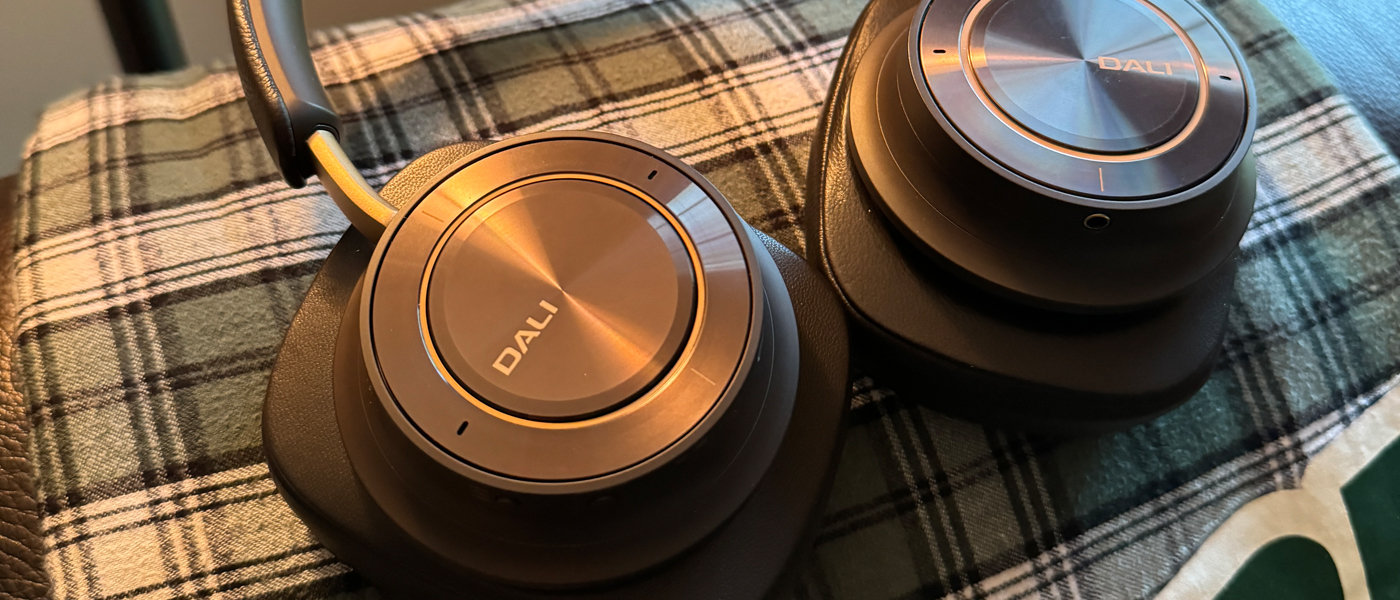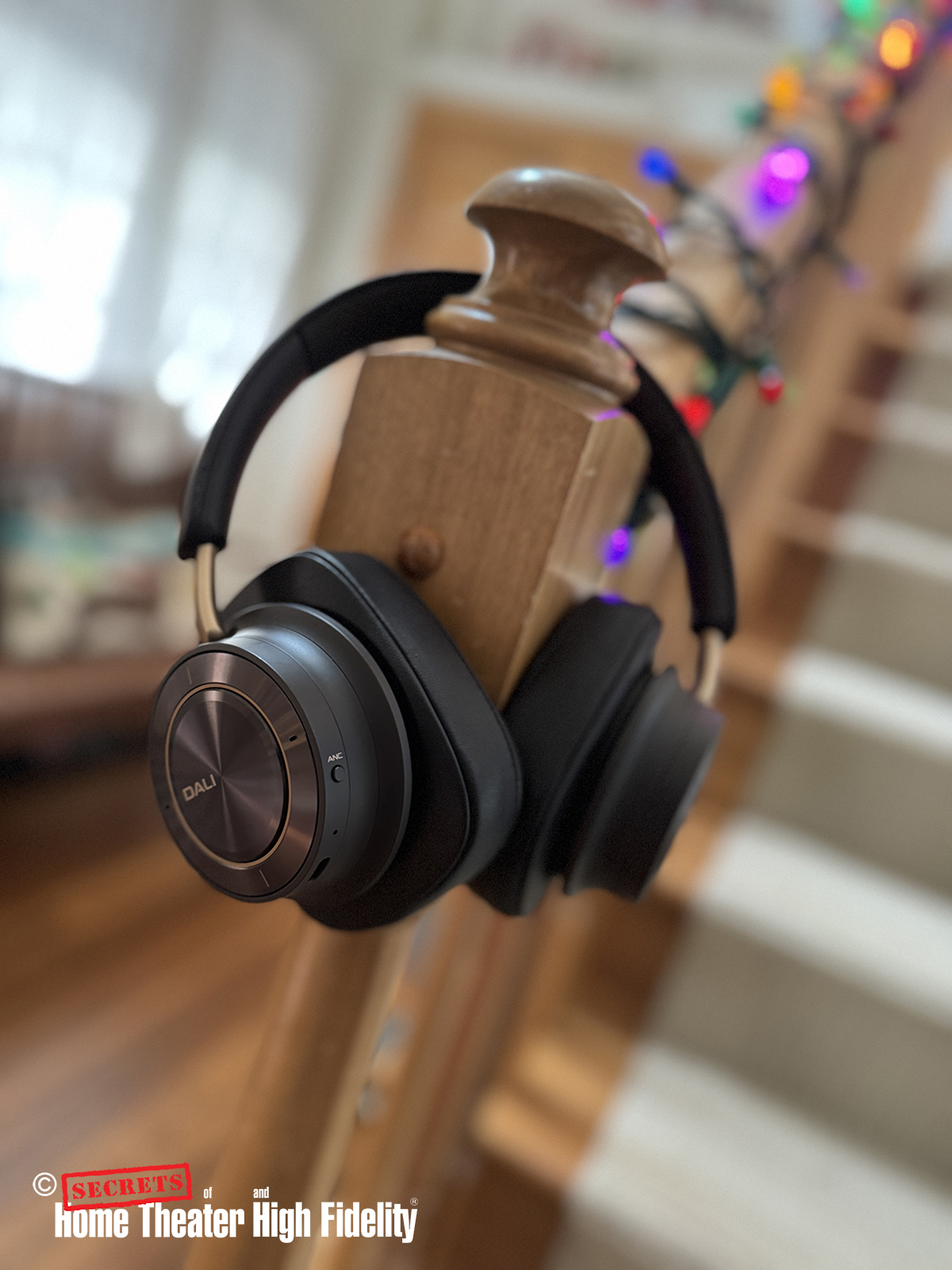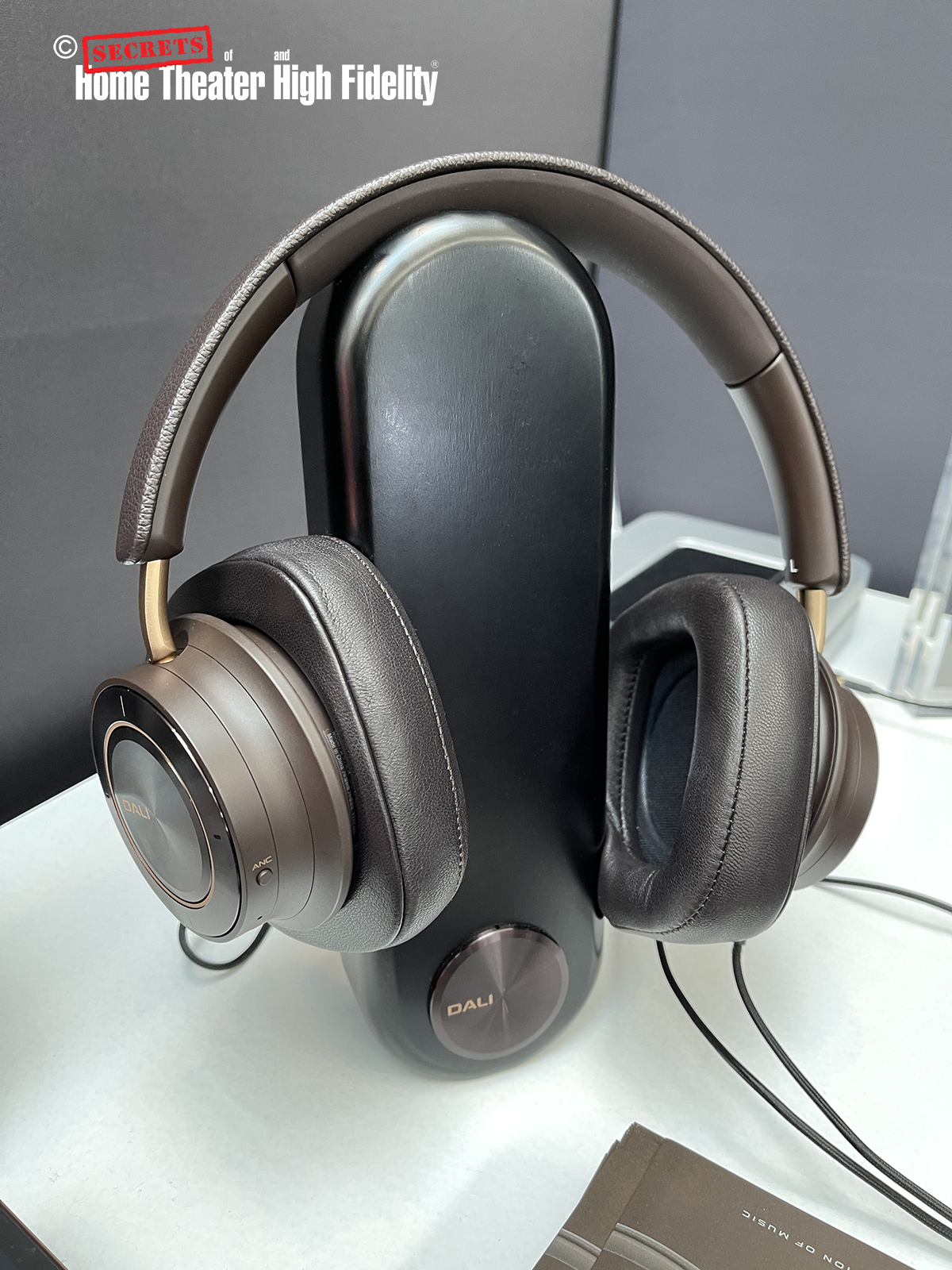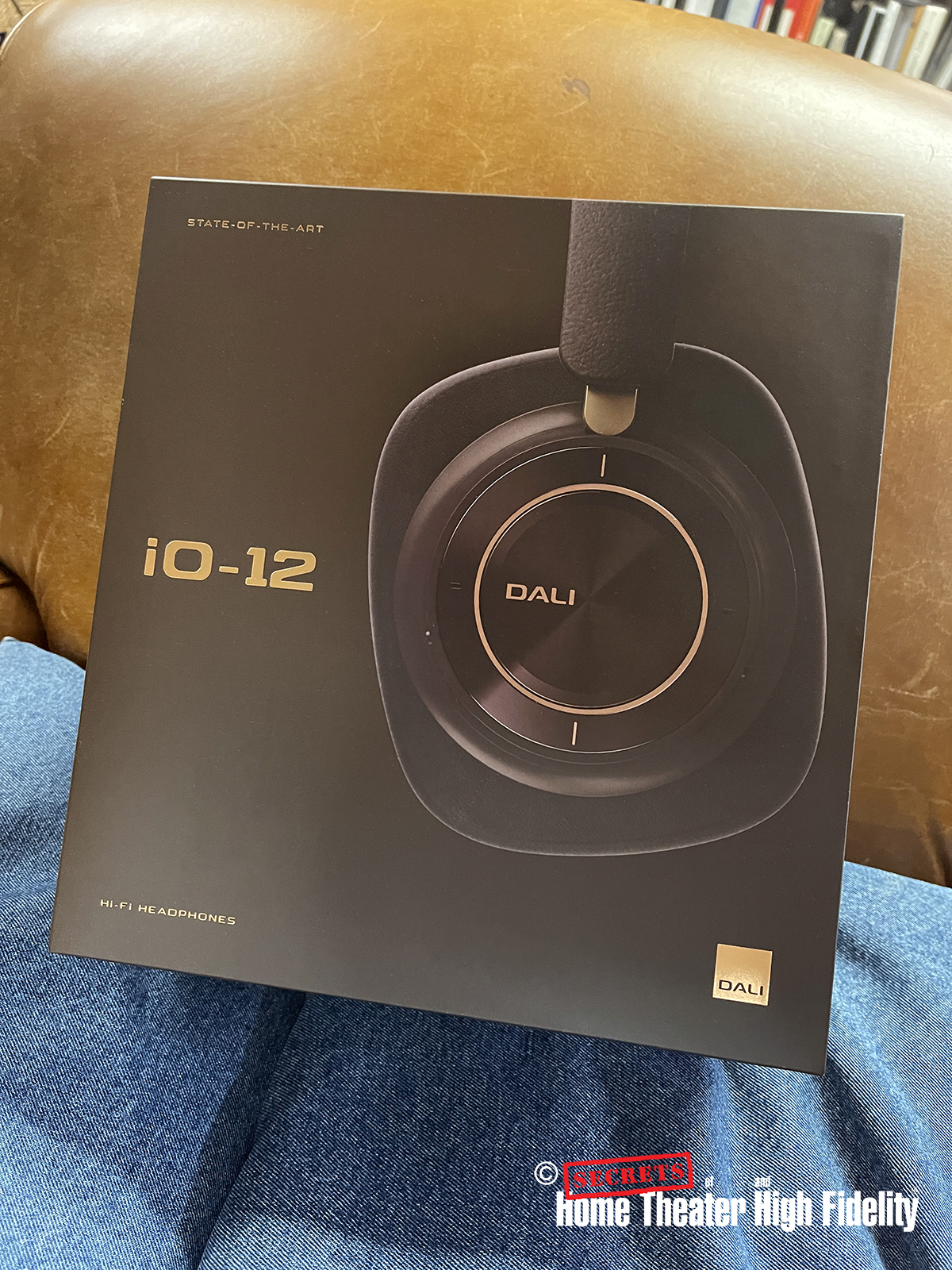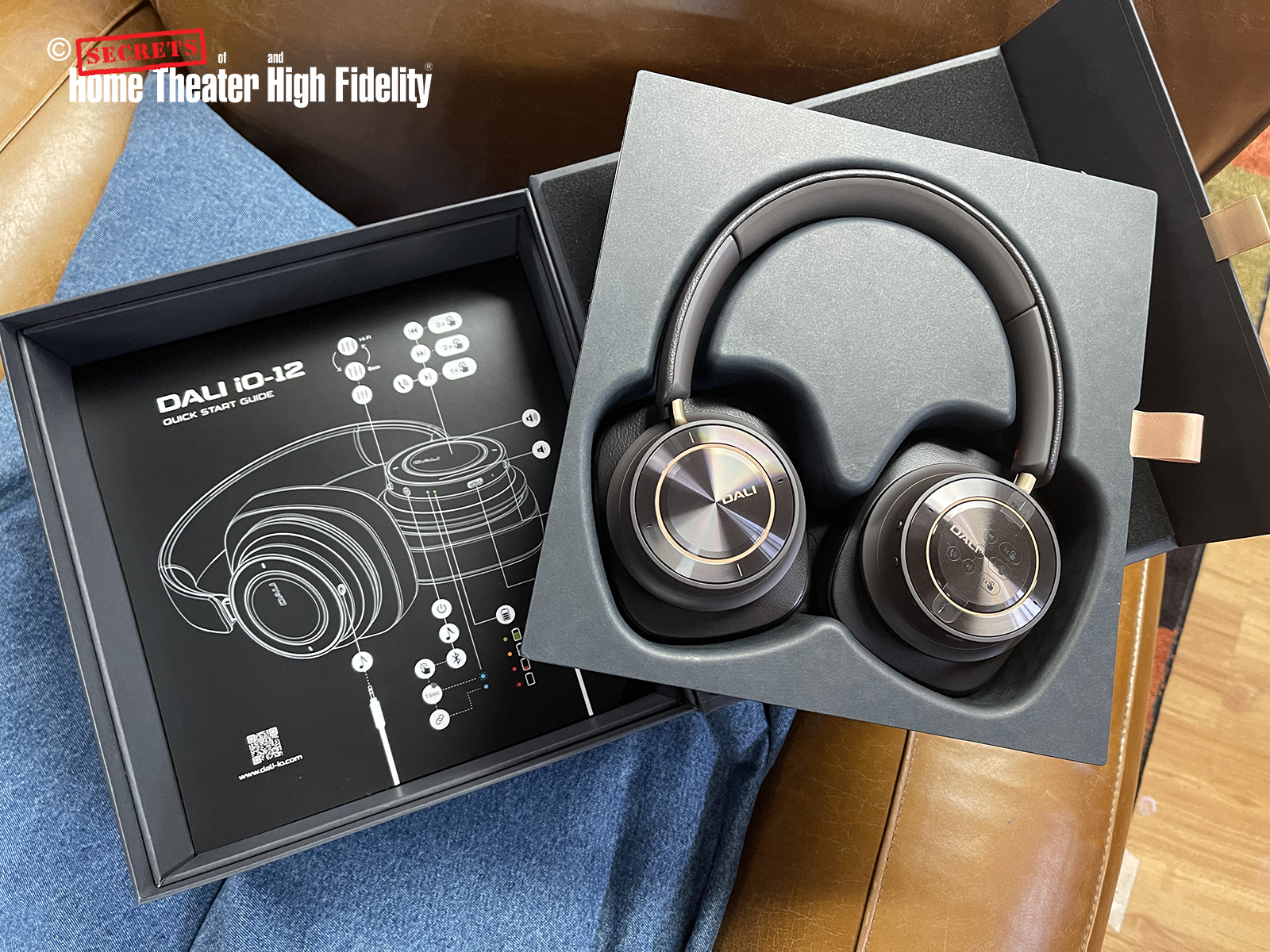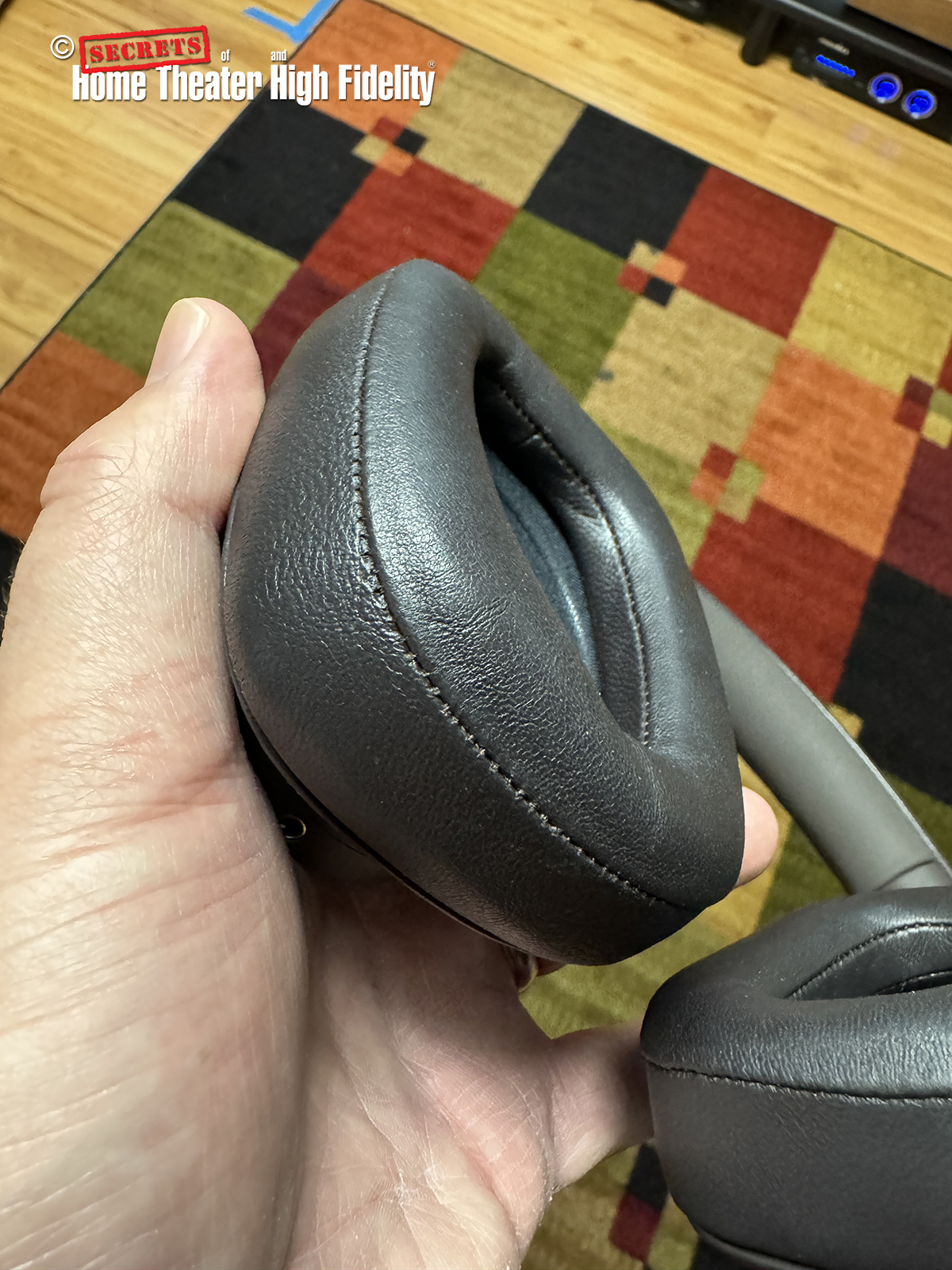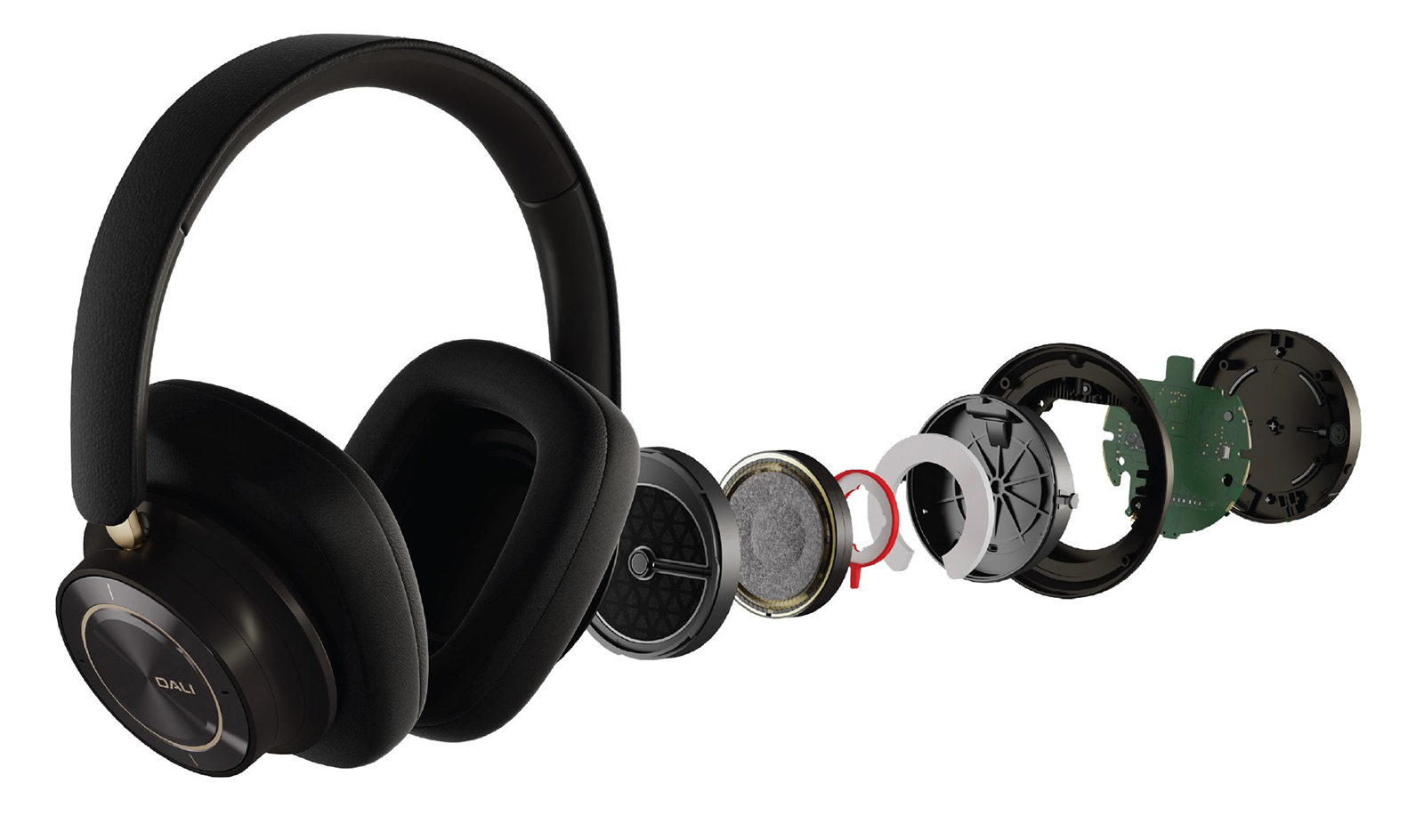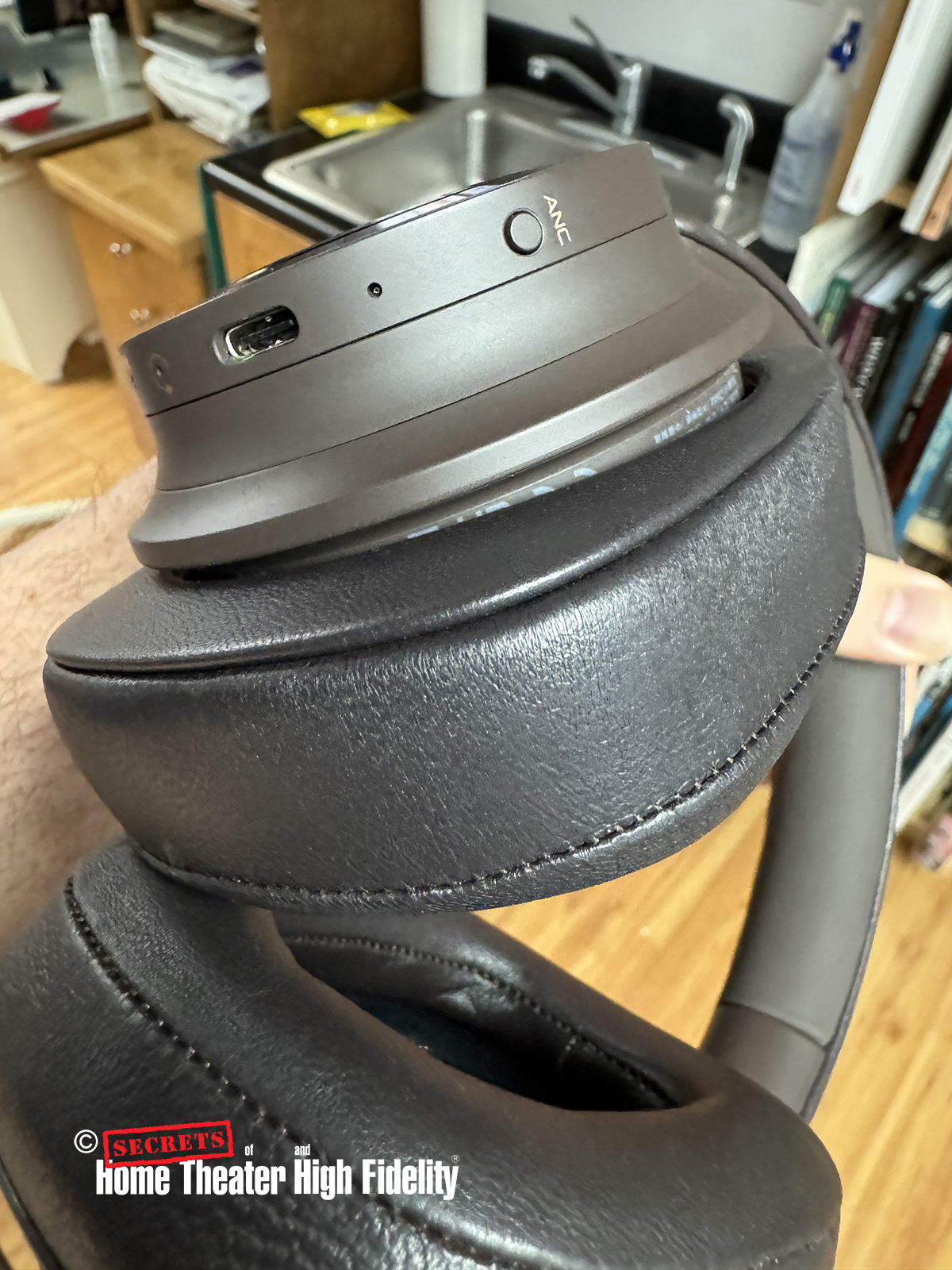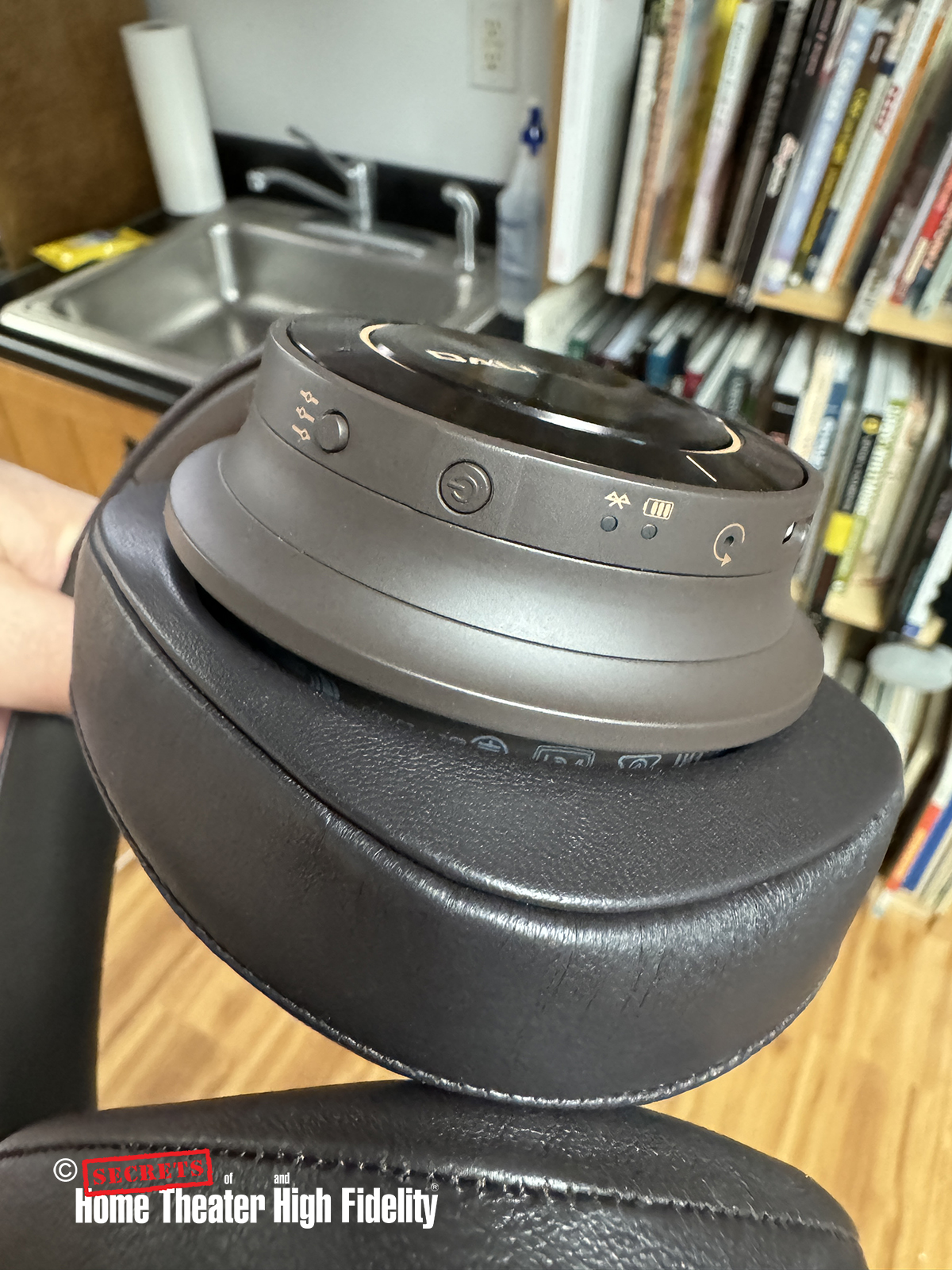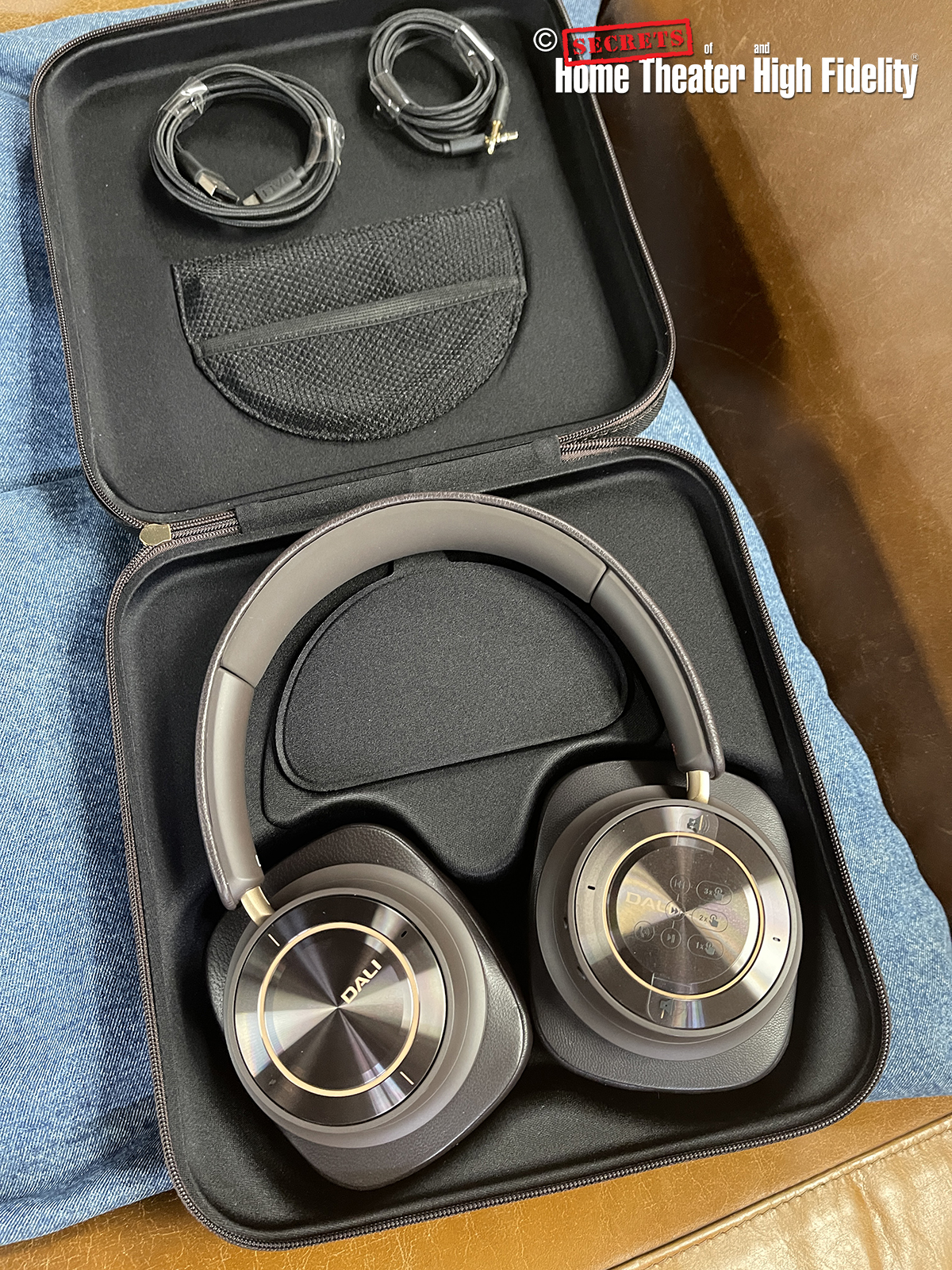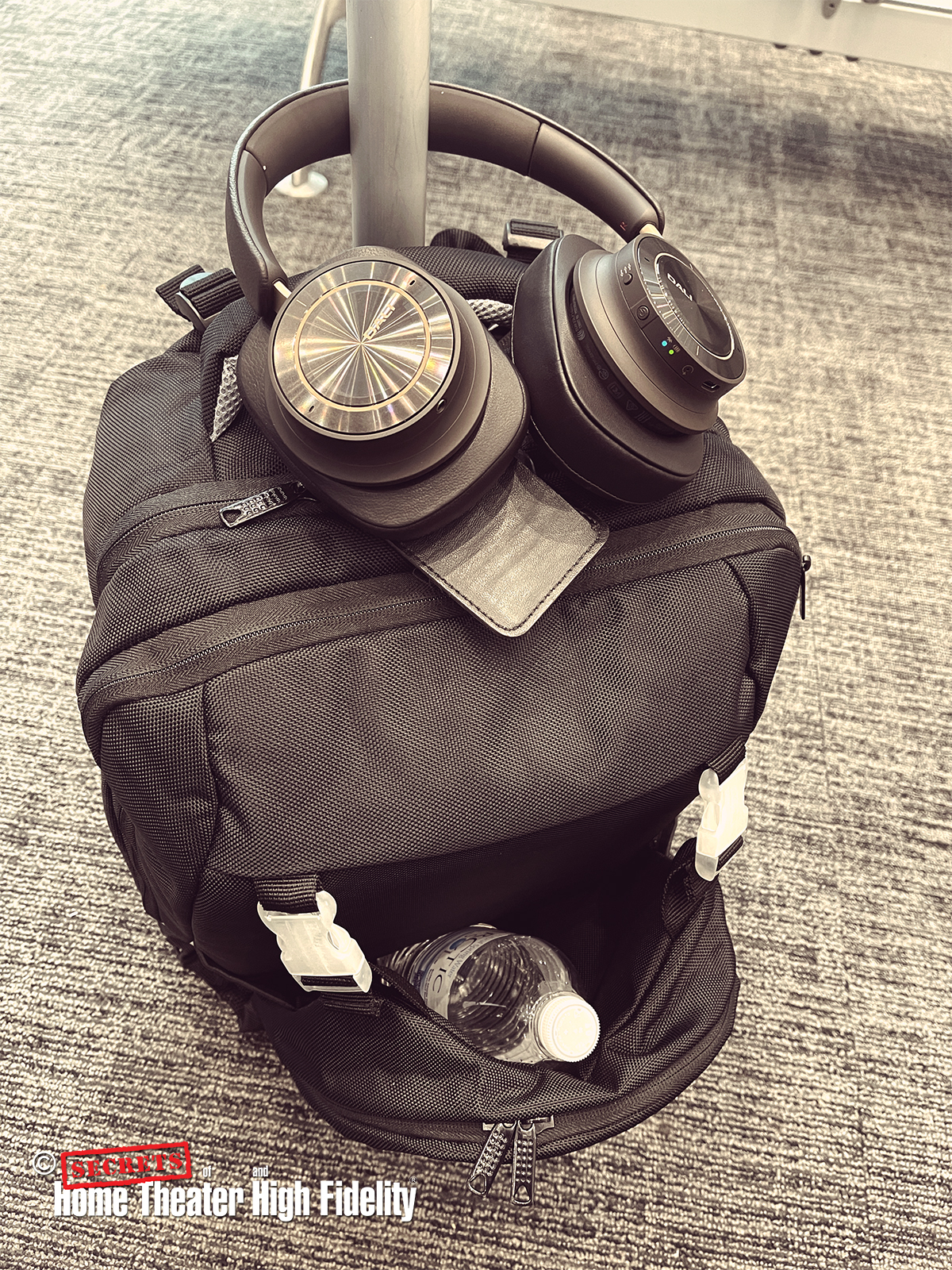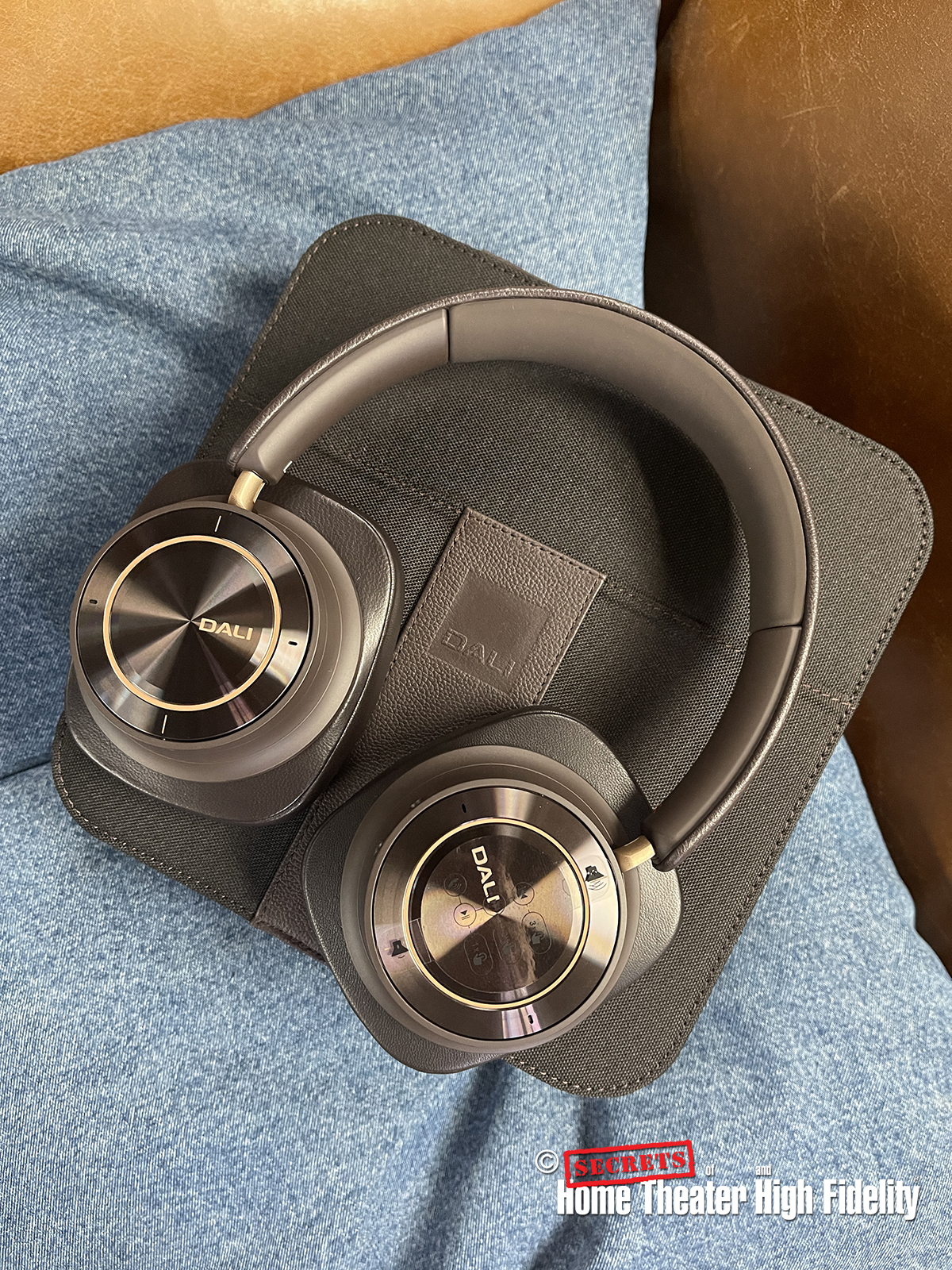DALI makes no bones about its intentions with the IO-12 headphones. They are squarely aiming for the top of the market with these smartly designed, technologically innovative, and luxurious new headphones. They make a very strong case for being the only headphones you would need for almost any given situation.
DALI IO-12 ANC Wireless Headphone Highlights
- Supremely comfortable for hours on end.
- A nicely balanced sound signature that plays well with all kinds of music.
- DALI’s patented SMC technology is used extensively in the IO-12’s 50mm drivers.
- One-touch Bass-Boost button.
- The noise cancellation feature is simple yet effective.
- No app. All controls are on the right earcup.
- Can be used completely passively, and guess what, they sound great that way!
- I like the hardshell travel case, but I wish it was smaller.
About four years ago, DALI came to market with the IO-4 and IO-6 as their first foray into wireless and noise-cancelling headphones. Targeted at both the entry and midrange segments of the category they proved to be quite successful with unique design touches and very good performance. I reviewed the IO-6 headphones back in 2020 and was quite taken with them.
This past Spring at the Munich High-End Show, DALI revealed the new IO-12 ANC wireless headphones and I spoke at length with Krestian Pedersen, DALI’s Head of Product Management, about them. It became very obvious through our discussion that the IO-12 headphones were not just a simple refresh or tweaking of the models that came before, but a complete clean-sheet-of-paper new design that incorporated everything that was learned from the first-generation headphones’ development. It was also a complete refocus to tackle the very top end of this market, as such the sound quality, comfort, technology, and user experience had to be second to none.
This kind of product brief is a very tall order. DALI knows this, but they also explained (in their typically understated Danish way) that they have both the design and technological expertise to successfully pull this sort of project off.
From the first moment that I began living with IO-12 headphones, it became crystal clear just how single-mindedly serious they were about this objective.
Design:
Closed-Back Dynamic Driver, Over-the-Ear (Circumaural) Headphones.
Driver:
50 mm Full Range Driver with SMC-based magnet system.
Frequency Response (manufacturer):
10 Hz – 48 kHz (+/- 3dB)
Sensitivity:
91dB SPL / 1mW @ 1 kHz (Passive Mode), 300 mV rms, 94 dB SPL @ 1 kHz (Active Mode).
Impedance:
25 Ohms (Passive Mode).
Connection:
Bluetooth® 5.2, 3.5 mm mini jack, USB-C.
Wireless Input Audio Codecs:
AAC, aptX, aptX HD, aptX Adaptive.
Weight:
0.37 kg / 0.82 lbs.
Color:
Dark Chocolate.
Accessories:
1.2 m USB-C cable (charging + USB audio)
1.2 m stereo mini jack cable
3.0 m stereo mini jack cable
3.5 mm stereo mini jack to 6.3 mm jack adaptor
Flight adaptor
Luxury travel case
MSRP:
$1,300.00 US
Website:
Product Page:
Company:
SECRETS Tags:
dali, io12, anc, noise canceling, wireless, headphones, bluetooth
Upon first blush, you’ll notice some basic familial design similarities between the new IO-12 and the existing IO-6. The shape of the headband and the basic touch control interface on the right earcup are retained, albeit with a significant upgrade in material quality (that’s real leather on that headband). Essentially just enough similarity to feel that the products are related. Beyond that, it’s a whole new ballgame.
Continuing with the aesthetic evaluation, the first thing that grabbed my attention was the sophisticated new color scheme. As an avid consumer of caffeinated beverages and cocoa-based delights, I am in complete favor of this new color DALI has chosen called “Dark Chocolate.” Gastronomy aside, however, it isn’t lost on me how there is more than just a little color and trim inspiration drawn from the recently released flagship DALI KORE loudspeaker. So, a bit of design subtext then to convey that these headphones have some lofty aspirations.
The next thing that stands out are the plush and sculpted rectangular earpads. Using a memory foam base and covered in a buttery-soft Dark Chocolate real leather (hungry yet?), they comfortably and completely encircle the ear lobes. This results in the IO-12 making excellent positive contact and passively sealing out a fair bit of external sound to begin with. While the earpads are not beveled (thinner in front and thicker in back) which is common practice these days, DALI has quite craftily “beefed up” the lower back corner of each earpad so that it makes a complete seal against the crucial top of the neck/base of the ear area that sometimes doesn’t quite seal right.
Looking past the pads and into the drivers themselves, DALI has chosen to employ an in-house custom-designed 50mm driver. The company went with a larger-than-standard driver to keep distortion and compression low while maintaining linearity and good bass performance. This headphone driver also intentionally shares some technology cribbed from DALI’s loudspeaker drive units. The driver’s cone material is made from DALI’s propriety paper fiber blend that they have refined over the years for loudspeaker use. The IO-12 drivers also use a traditional type of loudspeaker voice coil former, versus a more typical former-less design found in most headphones.
Looking further, one of the biggest advances found in this headphone’s driver is the significant use of DALI’s patented SMC (Soft Magnetic Composite) material in its construction. Briefly, SMC is a synthetic material that while electrically non-conductive, is highly magnetically conductive. DALI has been using SMC material (in favor of electrically conductive materials such as iron) in its loudspeaker driver pole pieces to measurably reduce distortion caused by unwanted eddy currents. The comparatively smaller size of the headphone drivers allowed DALI to use SMC not only in the driver’s motor system but also in most of the driver’s construction, short of the magnet and diaphragm, thus significantly reducing driver distortion further.
Examining the electronic and DSP side of things, the IO-12 uses Qualcomm’s latest Bluetooth 5.2 chipset and integrates AAC, aptX, aptX HD, and aptX Adaptive codecs. DALI claims to be using a fully bridged Class-D amplifier design for increased efficiency, reduced distortion, and increased battery life. The IO-12 uses two microphones for telephone duties and employs four additional mics for its ANC (Active Noise Cancelation) system. The ANC system has only one level of intensity when employed. DALI claims that it is the level that balances the most effective amount of noise rejection with the least impact on musical fidelity. There is also a transparency mode that allows you to hear external conversations and ambient noise and a completely off mode. The ANC is accessed via a single button on the front of the right earcup.
Speaking of fidelity, the IO-12 has a single level of tuning with only one bass boost mode that is activated and turned off via a button on the backside of the right earcup. Pressing that button will toggle you between, what a recorded British Concierge’s voice will tell you is, either “Bass” or “HiFi” mode. DALI chose to not include any user app or additional EQ resources by design. They wanted the headphones to be as easy to use as possible and felt an app would only get in the way.
There are four different ways that the IO-12 can be utilized. The first is wireless Bluetooth via any of the available codecs. The second is a digital USB connection via the included USB-C cable which will support bit-depths up to 24-bit 96 kHz. Third is active operation with a traditional wired connection where DSP, ANC, and Bass modes are available while using the standard analog cord. There is a ceiling bit-depth of 24-bits/48 kHz in this mode due to the ADC (analog to digital conversion) involved. The fourth mode is where the IO-12 is used completely passively via the analog wire like a traditional set of headphones. Obviously, no DSP or battery power is used in this mode but (unlike some similar headphones) DALI has designed the IO-12 to sound very good as just a standard set of headphones. In other words, they are not beholden to the DSP and active components to sound good. So, should you run out of battery life (DALI claims 35 hours’ worth on a full charge) you will not be stuck with the sound of last resort!
The control interface is very much the same as that of the IO-6. The face of the right earcup features two separate control surfaces. An outer ring controls volume. Touch the top of the ring for volume up and touch the bottom for volume down. Tapping the center hub of the right earcup once pauses and plays music as well as answers an incoming call. Tapping it twice skips to the next track while tapping three times skips back a track.
Accessories that come with the IO-12 include a large, durable hard-shell case, a 1.2 m USB-C cable (charging + USB audio), a 1.2 m stereo mini jack cable, a 3.0 m stereo mini jack cable, a 3.5 mm stereo mini jack to 6.3 mm jack adaptor, and one of those dual-pronged airline adaptor jacks.
Secrets Sponsor
For this review, I paired the DALI IO-12 with both my new Apple iPhone 15 Pro Max and my Shanling M0 DAP. When using the IO-12 in passive mode with my iPhone, I would add the THX Onyx dongle DAC/Amp.
While I tried out the DALI IO-12 in passive mode with Topping DX7PRO DAC/Amp and the Geshelli Archel 2.5XL Headphone amp, just for fun, it wasn’t strictly necessary as the IO-12 doesn’t need that kind of power to drive them effectively.
DALI set up some big expectations for the IO-12, both in terms of technical ability and pricing. The company is targeting these ANC headphones for the top of the heap and boy do they deliver!
Starting from the moment you pick them up, they have a more luxurious feel than I’ve encountered from any other competing model of ANC headphones, including the T+A Solitare T. The IO-12 are exceptionally comfortable to wear and remain so for multiple hours at a time, especially important for a long-haul flight. The design of the earpads alone is genius. Generously sized, and plush, and they seal perfectly with that clever extra padding strategically placed in the lower rear corner. As such they do an above-average job of passively blocking out ambient noise before you even turn them on. The control interface is easy enough for a chimpanzee (or a modestly evolved human) to master in minutes. All this, along with the lack of any app (more on this later) means that the IO-12 is probably the most well-thought-out and easy-to-live with ANC headphones I have ever used.
On the sonic front, and in any of the listening modes, the DALI IO-12 afforded me some of the cleanest and most transparent music reproduction from a headphone of this type that I have come across. Music came across as completely uncolored and particularly at higher volumes, the lack of distortion was noticeable. Listening wirelessly from either my iPhone or my Shanling DAP, the connection was strong and stable, and the sound quality was excellent. Very, very close to a wired connection sound quality-wise. Where once I could say that the aptX-HD connection from my DAP sounded superior, with my move to the newest iPhone and its chipsets, I can’t be so confident any longer. Both sounded equally good to me. As for the price point and target market DALI is going after I would have liked to have seen LDAC included as a codec option as well, but I’m sure it’s not going to be a deal-breaker for most people.
The voicing of the DALI-IO-12 is very much to my liking. Subjectively, in HIFI mode, I find it to be very close to the Mark Levinson No.5909 ANC headphones in their standard tuning mode. The IO-12 bass is sufficiently deep while being superbly tight and detailed. The bass region transitions smoothly into the midrange with plenty of body available on vocals and instruments. Both male and female vocals sound neither overly pronounced nor recessed. The treble sounds smooth yet detailed without being fatiguing. Sometimes a push in the high frequencies can be mistaken for extra detail when listening to headphones. That is not the case here. Both the IO-12 and the No.5909 have that gently declining treble voicing to them that helps both headphones sound more like excellent speakers.
According to DALI, engaging the Bass mode on the IO-12 punches the bass region between 30 Hz – 200 Hz up by 3.5dB with a center at 70 Hz. DALI themselves state that they included Bass mode more for bass compensation in noisy environments (and to appeal to the Beats crowd) and HIFI mode is the recommended way to experience the IO-12 at their best. For my taste, Bass mode results in a slightly muddy-sounding upper bass and not enough of a push in the sub-bass region to make it enjoyable. If the boost shelf started coming in at 100 – 125 Hz, with a center at 50 Hz, and remained constant down to 20 Hz I think that would be preferable to me. To my ears, the Enhanced Bass mode on the Mark Levinson headphones has an edge over the IO-12 in this regard. Whether this could be tweaked in a firmware update to the IO-12 I have no idea, let alone if DALI has any interest in such a tweak.
The IO-12 has only one strength level of noise cancellation, along with a transparency mode that allows you to hear things like outside conversations, in-flight announcements, etc. Having taken the IO-12 along with me on a couple of short flights to D.C. and Toronto, I found the noise canceling feature to work effectively and be at just the limit of intensity that I could stand for prolonged usage before it became uncomfortable for me. As far as I could tell, music reproduction quality took a very minimal hit with ANC engaged. Switching it on and off while listening, I thought I picked up a minor loss of transparency and no real noticeable shift in tonality.
Listening to the IO-12 in a direct digital connection to my computer sounded excellent by all accounts. Most certainly it is the cleanest and highest fidelity way to listen to any headphones like this, if not the most convenient. But the best party trick that the IO-12 brings to the table is the way they sound when listening completely passively, with the analog cord as a traditional pair of wired headphones.
In this mode, the IO-12 sounds like an outstanding pair of dynamic closed-back headphones that could sonically stand on their own with other passive headphones out there. I appreciate and applaud DALI for taking the time and engineering effort to make sure the IO-12 weren’t just excellent ANC headphones, but also excellent plain-jane wired headphones. Only the Mark Levenson No.5909 can do the same thing. How valuable is this ability to you? It depends. If you are at all careful, it is unlikely you will ever deplete the IO-12 headphones rated 35-hour battery life. But I would personally prefer to have this ability and not use it than need it and not have it. It also speaks to the doggedness of DALI’s engineers not to cut corners, and I like that.
That battery life rating is fairly accurate too. As I was using the IO-12 headphones daily while walking the dog, exercising, running errands, etc. (about 2 hours per day), I fell into a pattern of charging them every two weeks when they registered 30 percent battery life remaining.
As we’ve established, the IO-12, unlike some other ANC headphones, does not come with an integrated app. DALI reasons that an app just complicates the usage of the headphones and is essentially unnecessary. In principle, I don’t disagree; it’s nice not having to fire up an app to access the headphone settings. Some, however, might feel that for the price of the IO-12, an app should be a part of the package.
If I had any complaints about the IO-12 they would center not on the headphones but their travel case. It frankly is just a bit too large to easily tuck in a bag or carry on. If it was overall more of a rounded shape it would make it much easier to stow for travel.
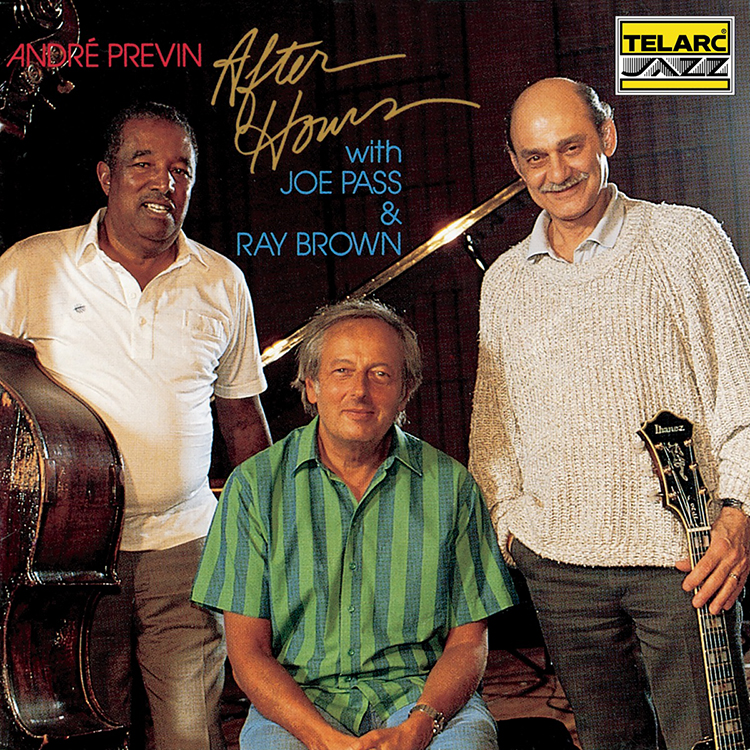
André Previn with Joe Pass & Ray Brown, “After Hours”, 1989, 16-bit/44.1 kHz FLAC via Qobuz.
André Previn is so associated with being a classical music composer and conductor that most people have probably forgotten that his first love is Jazz, and he is a wonderful Jazz pianist. This superb-sounding Telarc recording features Previn accompanied by genuine Jazz legends, guitarist Joe Pass, and bassist Ray Brown. From the opening plucks of Ray Brown’s bass on “They’ll Never Be Another You” I could tell that the IO-12 headphones were a step (or two) above your typical ANC headphones. Brown’s bass work sounds deep, and tight with plenty of string detail in each pluck. Previn’s bouncy piano playing has plenty of ring and depth to the notes. The IO-12 are also transparent enough that I can hear the piano hammers against the strings. There is also this wonderful glistening sound to the strings of Joe Pass’ guitar as he gracefully bounds through his solo that the IO-12 effectively relays.

Samantha Fish & Jessie Dayton, “Death Wish Blues”, Rounder Records, 2023, 24-bit/88.2 kHz FLAC via Qobuz.
This high-energy blues number is packed with distorted guitars and processed vocals that can at times overwhelm headphones and obscure some of the finer details in the lyrics and other parts of the mix. The DALI IO-12 does this track justice on a couple of different levels. First, the overall voicing is such that the track doesn’t come off as sounding flat but instead with plenty of groove in the bass and a high end that isn’t grating. It really is a fantastic, raunchy power track and these headphones show that off. Second, the IO-12 is clear enough that I was able to better make out the lyrics in Samantha Fish’s heavily processed vocals within the layers of blazing guitars.
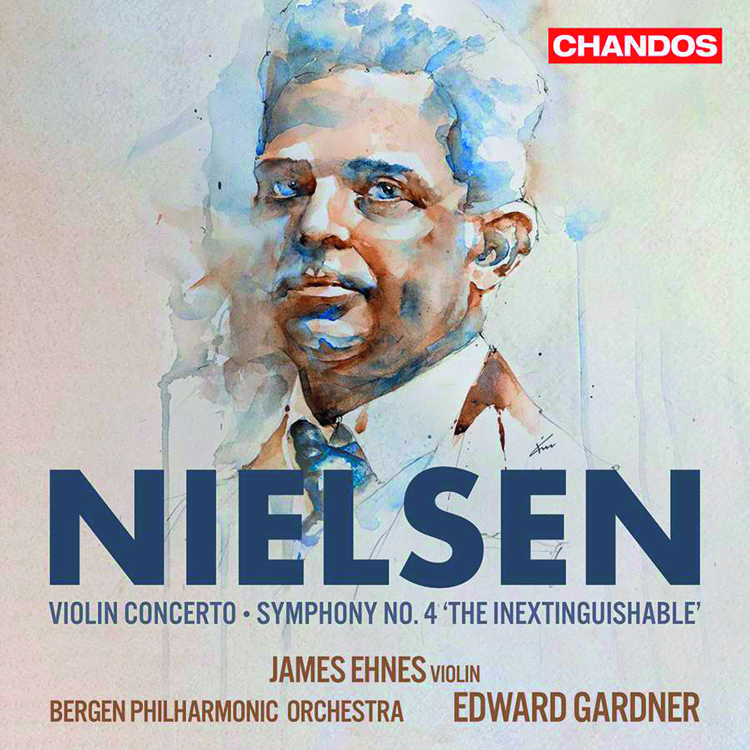
James Ehnes and the Bergen Philharmonic Orchestra, “Nielsen Symphony No.4 “The Inextinguishable”, 2023, 24-bit/96 kHz via Qobuz.
Technical Editor David Rich has gotten me interested in listening to Carl Nielsen lately and when this release of Nielsen’s No.4 showed up in my Qobuz suggestion list, I gave it a whirl. The IO-12 handled the power and intensity of a full orchestra with aplomb. Dynamic shifts were handled easily, and the violin solo during the “Allegro cavalleresco” track was reproduced with such delicacy and detail that it made me feel immersed in the performance. The headphones also projected a nice sense of space with this music, at least a little more than expected from a closed-back set of cans.

Geoff Castellucci, “The Sound of Silence”, Kage Records, 2023, 24-bit/48 kHz via Qobuz.
I tend to use this track to test the bass reach of full-range speakers and subwoofers. I also like to use it in headphone testing, mainly to see how low and hard the bass will hit. The IO-12 definitely reproduces the low synthesized bass on this track with serious authority. In this case, enough to shake my skull. Castellucci’s deep and spacious baritone was conveyed with loads of texture and weight to it. Very powerful sounding, while remaining clean and free of distortion.
Secrets Sponsor
The DALI IO-12 ranks as one of the best wireless ANC headphones currently available. No “ifs,” “ands,” or “buts.”
- Supremely comfortable.
- Excellent sound quality, both active and passive.
- Feels luxurious.
- No app.
- A more compact travel case.
The DALI IO-12 is one of the best ANC wireless headphones that I have come across. As a top-tier product, they trade blows with the likes of Mark Levinson and T+A for the wireless ANC headphone crown. The IO-12 can proudly stand on its own in such company as I find them clearly superior in comfort and at the very least on par in sound quality. Beyond that, it is simply a matter of details as to which model any consumer would prefer over the other. But to answer the biggest question, “Are the DALI IO-12 worth the $1,300.00 MSRP?” The answer is unquestionably, yes!
Sonically, those SMC-enabled drivers provide a sense of musical transparency that is both noticeable and remarkable coupled with an overall voicing that is very much to my liking. Comfort-wise, I should desire a lounge chair made from life-size versions of the IO-12 earpads, they are so plush and cosseting! These headphones also look and feel like a luxury product. Technically, the ANC is effective and reliable without degrading the music, and the IO-12 also passes as an excellent sounding passive wired headphone, should the batteries ever run dry.
If you are searching for a set of top-quality wireless noise-canceling headphones, and you will only settle for the very best, then the DALI IO-12 is an easy recommendation to make.




